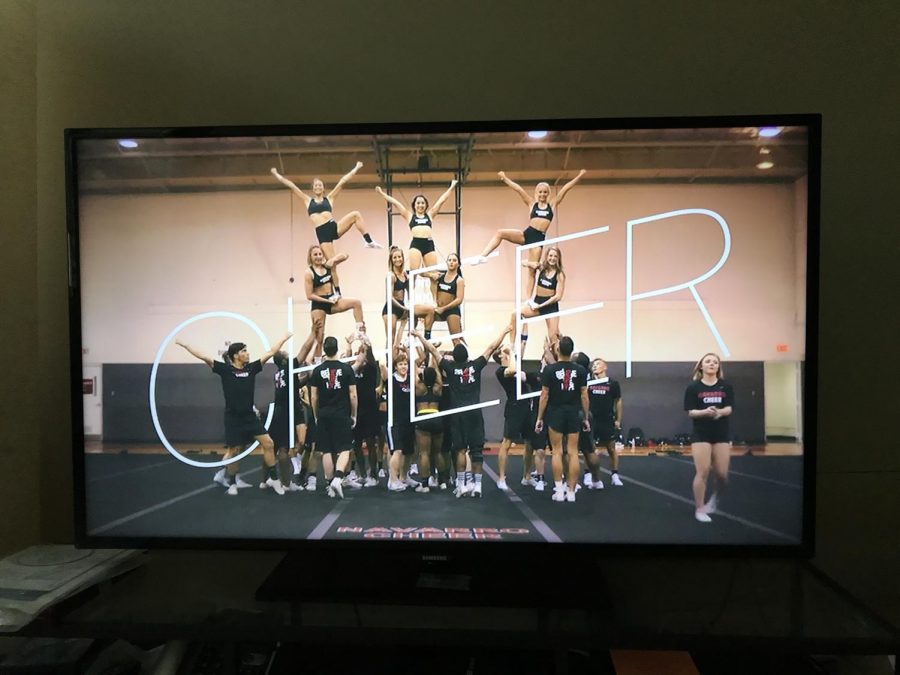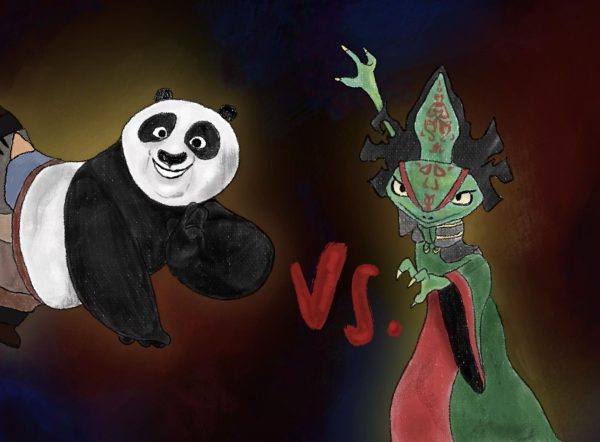Netflix Docuseries ‘Cheer’ Hits Zero
Directed by Greg Whiteley, “Cheer” has aesthetically-pleasing cinematography and consistent color schemes, with warm tones complementing the team’s signature red.
April 17, 2020
While the existence of cheerleading is well-known, the culture of cheer remains an enigma to the average American compared to more popular sports with established fans.
Netflix’s recent documentary takes on the underrated sport and unveils the nature of competitive cheerleading. Released Jan. 8, Netflix’s six-part docuseries “Cheer” follows the Navarro College cheerleaders’ journey to the National Cheer Association College Nationals.
Soon after its release, the documentary gained traction, with fans putting the show on Twitter’s trending page and creating a subreddit with thousands of members, and rightfully so. The documentary offers a comprehensive look into the ruthless and cutthroat nature of college cheer, the highest level of competitive cheerleading.
The cheer team’s journey begins with competition among the team, in which only 20 out of 40 members will officially compete at nationals. Because cheer heavily relies on trust among teammates and overall chemistry, the cheerleaders become conflicted between supporting their teammates and competing for the same spot.
Apart from the team dynamic, the documentary also shows the perseverance of the cheerleaders to perform near-impossible stunts and push their bodies to the limit. Under immense pressure to “hit zero”, or perform without receiving a penalty, cheerleaders constantly put themselves at risk for the team.
On occasion, the documentary shifts its focus to individual members, most of whom come from disadvantaged backgrounds. Many of Navarro’s cheerleaders discuss overcoming struggles relating to identity and mental health through cheer, providing insight on what the sport means to them. The inside look into the cheerleaders’ hard work, complemented by individual motivations and charm, hooks viewers into following their journey across six episodes and makes their victories more rewarding.
While keeping focus on the team’s journey, “Cheer” also gives insight into a brief history of cheer and its evolution into a stunt-based sport with increasing difficulty and risk. This gives viewers who are unfamiliar with the sport enough context to understand the rigor of competitive cheer that may have gone unnoticed without the show bringing it to light.
Additionally, the documentary does not shy away from the toxicity of cheerleading. The risks associated with cheer are clear; injuries are not treated lightly, and even so, a few cheerleaders admit to lying about the severity of their pain in order to compete.
The documentary’s occasional segue into the overall culture of competitive cheer perfectly balances the team’s story, making it both comprehensive and engaging.
By giving viewers an authentic look into college cheer as a whole and the perseverance of the Navarro cheerleaders as individuals, the documentary shows the audience why the team’s journey, and why cheer itself, is a story worth telling.



















![Art Fair participants from various clubs and art courses had the opportunity to sell handmade creations to students at stands near the ASB room during lunch from Jan. 30 to Feb. 1. “I feel like its just a good way to connect with the rest of my peers, the artist community [and] the student body while also giving back to the school because its given me so many opportunities where I can flourish in the creative arts,” artist and junior Alexander Torpus said.](https://portolapilot.com/wp-content/uploads/2024/02/IMG_6896-1-600x400.jpg)
